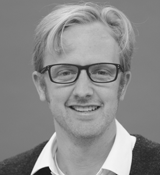By: Rob Hoehn
Regardless of whether the workplace is a public or private entity, departments often struggle to prioritize assigned projects, and align individual projects with overall objectives. In this case study, we’ll explore how the National Cancer Institute implemented crowdsourcing to enable the research community and the public to submit ideas on how best to prevent, diagnose and treat cancer – and how as a result, they were able to prioritize existing research and initiatives into areas where additional resources were needed the most.
Reading about citizen science, you get the sense that it covers quite the range of activities. According to Wikipedia: “Citizen science (also known as crowd science, crowd-sourced science, civic science, volunteer monitoring or networked science) is scientific research conducted, in whole or in part, by amateur (or nonprofessional) scientists. Citizen science is sometimes described as ‘public participation in scientific research,’ participatory monitoring and participatory action research.”
Certainly citizen science has accomplished a great number of tasks from identifying funguses with anti-cancer applications to redesigning proteins. But one of the other applications of citizen science research is in generating ideas that will help prioritize the work of other researchers and scientists.
Whether researchers work for government institutions or within private organizations, departments often struggle to prioritize projects assigned to them and aligning individual projects with overall objectives. In fact, research from MIT says that a good governance model for prioritizing initiatives is a key differentiator between companies that get the most from their investments and those that don’t.
This is why some organizations are looking to the public for new ideas that help them align their existing initiatives and make a business case for things that they were already working on. A good example of this is the National Cancer Institute.
In 2016, The National Cancer Institute launched the Cancer Research Ideas crowdsourcing website to enable the research community and the public to submit ideas on how best to prevent, diagnose and treat cancer. Submissions were reviewed weekly by a Blue Ribbon Panel as they developed the scientific direction of the Cancer Moonshot (an initiative that called for a decade’s worth of cancer research progress in just five years).
Ideas were submitted in eight categories: cancer prevention and early detection, clinical trials, data sharing, pediatric cancer, tumor evolution and progression, implementation science, immunology and prevention, and other exceptional opportunities. A Blue Ribbon Panel reviewed the submissions both to ensure that their priorities aligned with those of the broader community and to see what ideas we might be missing.
The ideas informed the recommendations of the Blue Ribbon Panel’s final report that organized research into ten different categories. And although there weren’t a lot of new ideas from the public, they helped prioritize existing research and initiatives into the areas where additional resources were most needed.
By Rob Hoehn
About the author
 Rob Hoehn is the co-founder and CEO of IdeaScale: the largest open innovation software platform in the world. Hoehn launched crowdsourcing software as part of the open government initiative and IdeaScale’s robust portfolio now includes many other industry notables, such as EA Sports, NBC, NASA, Xerox and many others. Prior to IdeaScale, Hoehn was Vice President of Client Services at Survey Analytics.
Rob Hoehn is the co-founder and CEO of IdeaScale: the largest open innovation software platform in the world. Hoehn launched crowdsourcing software as part of the open government initiative and IdeaScale’s robust portfolio now includes many other industry notables, such as EA Sports, NBC, NASA, Xerox and many others. Prior to IdeaScale, Hoehn was Vice President of Client Services at Survey Analytics.
Featured image via Yayimages.

